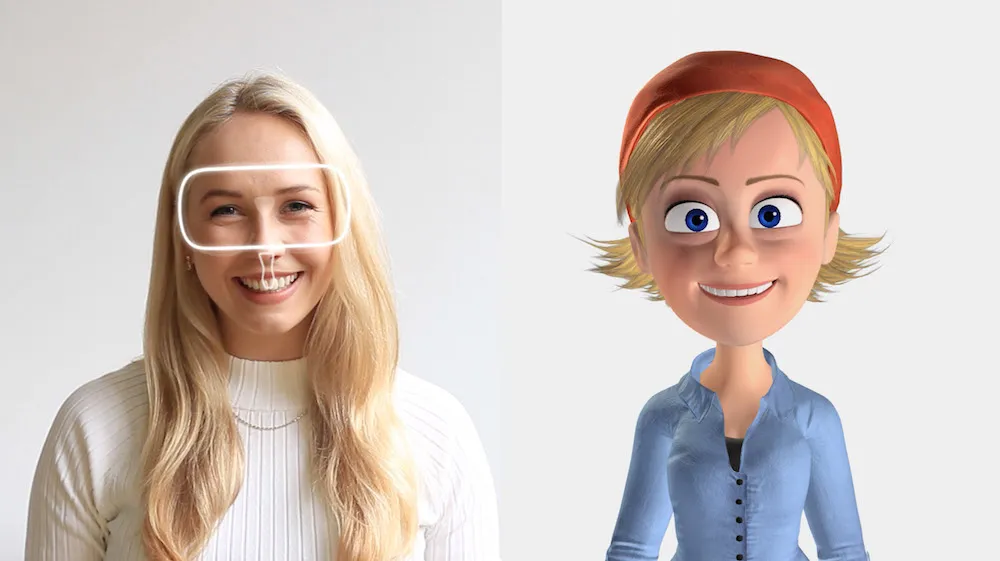A new virtual reality head mounted display (HMD) is attempting to meet its production costs by raising funds on Kickstarter. The VEESO sets itself apart from other HMDs like the Oculus Rift by implementing built in facial tracking components. This could lead to more realistic and lifelike digital avatars for VR socialization or any number of other applications.
Upload interviewed the head of this new company, Joseph D’Anna, via email and he provided some insight into how this intriguing device works.
Upload: How exactly does the Veeso headset work when it comes to face tracking?
D’Anna: Infrared cameras, placed between the user’s eyes, tracks the position of the pupils and eyelids’ openness, allowing Veeso to understand where the user is looking…The same camera is able to track the basic position of the eyebrows, thanks to its very wide angle lens.
A mouth/jaw infrared camera is pointed to the mouth area and tracks every movement of the mouth with high fidelity.
Veeso is also equipped with an onboard, linux based, battery powered computing module, able to operate both eyes/mouth tracking processes simultaneously, saving up important resources on the phone and allowing for longer VR experiences on the go.
The technology runs on an ARM chip with a bluetooth module that allows it to send the tracking data to the device, so that the device can render the points on the 3D model.
Upload: What sort of unique experiences will be possible with Veeso?
D’Anna: We are currently working with very renowned gaming studios, developing 3 unique social applications which are designed exclusively for our face-tracking tech. These Apps will work for both Android and iOS and will be similar in style to the group chats showed in our Kickstarter video.
Upload: How does this product differ from similar products such as the recent Apple acquisition FaceShift?
D’Anna: Face-tracking, although relatively new, has become a quite popular feature in many popular apps like FaceSwap, Masquarade, FaceShift, SnapChat etc.. not to mention the use for surveillance, movies and marketing – but all these uses simply require the user to sit in front of a camera (be it a webcam, smartphone cam etc..) so that the totality of their faces is ‘tracked’.
Nobody has ever attempted to bring face-tracking to VR, for the apparent and obvious fact the when using VR most of your face is covered by the actual headset, and therefore standard tracking techniques simply would not work.
Veeso is the first to have solved this problem, and to have created an actual product (not an experiment or a proof of concept), but a commercial product that will be able to be delivered to the consumers by Christmas.
Upload: How exactly is it that Veeso came to be. What was the development process like for this headset?
D’Anna: Veeso is the continuation of a journey that started almost 10 years ago, when we first introduced our social platform CamUp.
With CamUp we pioneered real time social entertainment, with a live video based social platform, to let users interact with each other around live content (tv shows, sport games, live events). We understood early on the incredible power that a shared emotion can have.
With CamUp we won the 1st prize at the MIPTV startup Awards in Cannes in 2011.
From there, our passion for everything VR related, combined with the absolute certainty that VR will soon replace every entertainment platform (including CamUp), pushed us to enter the immersive space.
Because a user’s face is covered by the VR headset, it was clear that we needed to move away from the concept of webcam communication and find a way to bring emotions into the virtual world. This is how the idea for Veeso was born.
Veeso’s founders are two brothers, graduates of the European School of Economics. The school is providing seed funding for this startup.
Upload: What sort of price point will Veeso release at?
D’Anna: Our aim is to keep the reatil price of Veeso at or under $100.
With the high end prices for Oculus Rift, HTC Vive and PlayStation VR, there are growing concerns amongst the tech and consumer community that the technology is just too expensive to draw in users in the next 1/2 years. The highend pricing strategy of the 3 major players in the industry has proved disappointing to U.S. consumers who were hoping for a more affordable price for everyone especially those living in other countries, where the cost of the technology is even greater.
Upload: What will happen if the Veeso Kickstarter does not reach its funding goal?
D’Anna: The main purpose of our Kickstarter, as it should be for all these campaigns, is not to raise funds (although it certainly an important aspect) but it is mainly to create awareness and test the consumer’s opinion. Seeing the way all the major news sites are now picking up the story, I believe we have succeeded in that.
We of course are still fully confident that we will achieve our funding goal, but should that not happen we will of course continue to work on our tech with the same prospect of releasing it to the public.. it might just take a little bit longer.
–
The Veeso Kickstarter will run for another 23 days and, at the time of this writing, has currently raised $4,142 of an $80,000 goal.





























